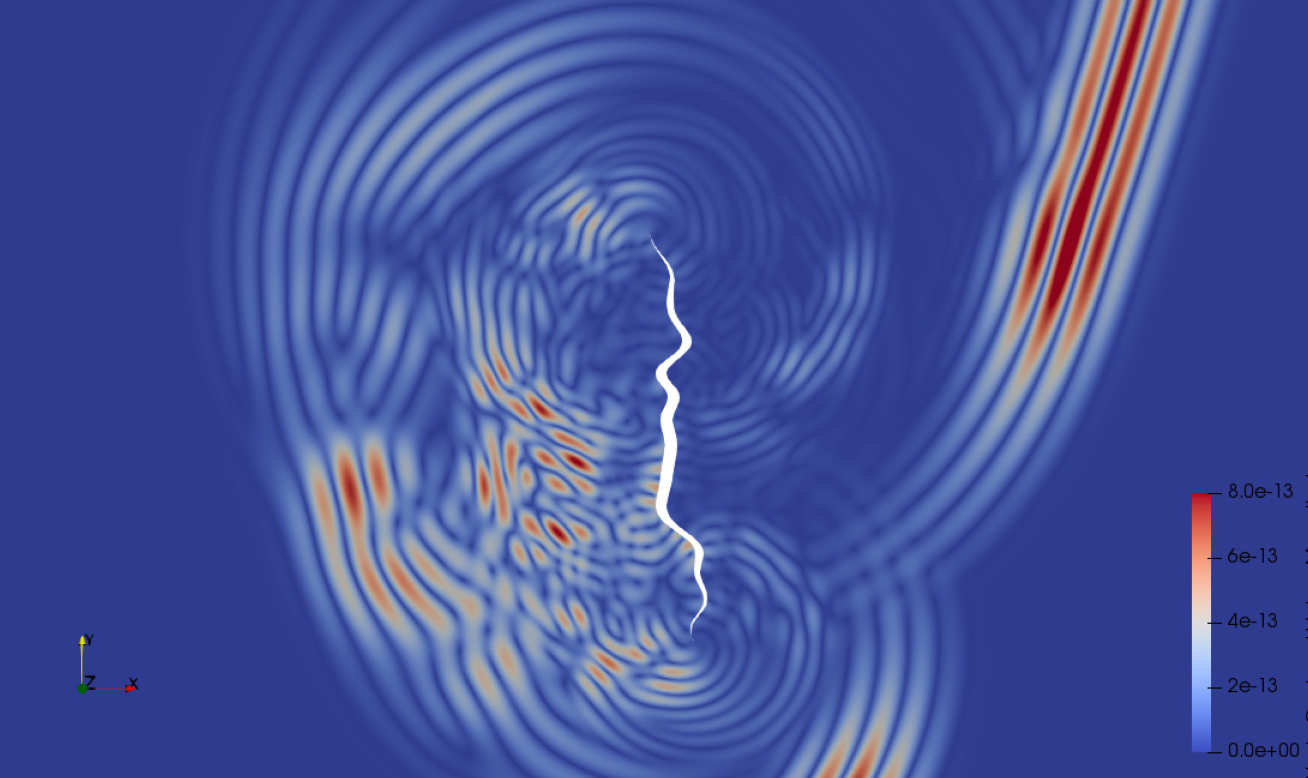Expected Amplitudes for the Scattering of Ultrasound by Rough Defects for Pulse-Echo and TOFD inspection
The characterisation of cracks within elastic media forms an important aspect of ultrasonic NDE, where techniques such as time-of-flight diffraction (TOFD) and pulse-echo (P-E) are often used with the presumption of scattering from smooth, straight cracks. However, since cracks are rarely straight or smooth, the scattering of ultrasound by rough surfaces is a crucial research topic.
A major challenge is that each rough defect is unique and randomly determined, but it is possible to anticipate statistical metrics of roughness using industrial knowledge of characterised in-service defects. This project combines modelling, simulation (using the state-of-the-art Pogo GPU-based software) and supporting experiments to obtain the expected amplitudes of reflection from surfaces and diffraction from tips for a range of inspection set-ups for longitudinal and shear wave incidence.
The qualification of ultrasound inspections of defects that are expected to be rough (typically thermal fatigue or stress corrosion cracking) is presently very conservative. A pragmatic solution is to apply a large safety threshold, but this can lead to unnecessary shut-downs and early retirement of components. This project seeks to erode the conservatism (leading to large-scale cost saving) and to provide insight that will extend the versatility of current set-ups to alternative parameter settings for access-restricted components.



